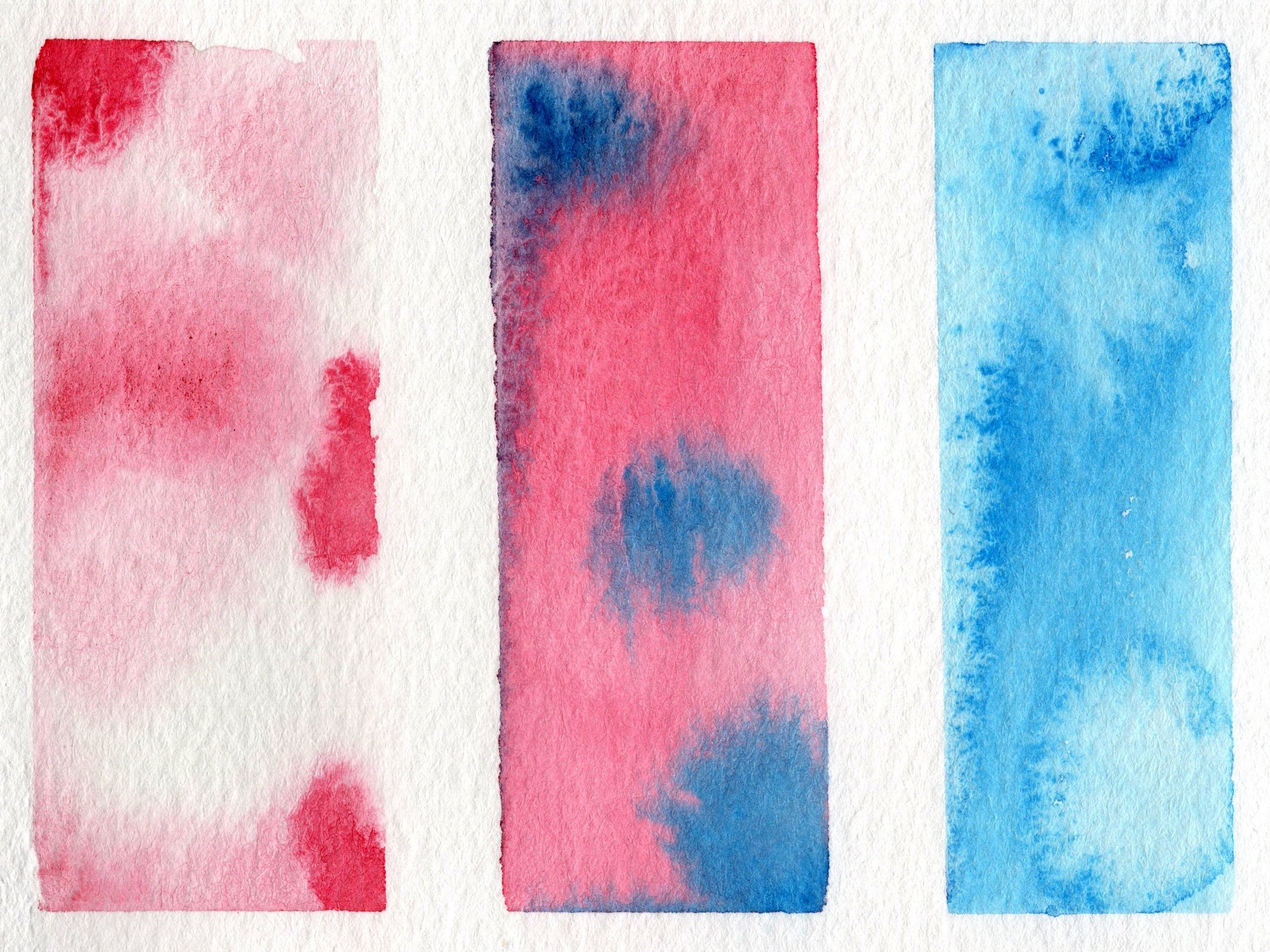Working with wet on wet in watercolor
Wet on wet is one of my favorite techniques in watercolor. You have less control when using wet on wet, but it lets watercolor do the cool things that watercolor does. This technique often results in some really neat effects.
In this post I’ll talk about what the wet on wet technique is, give some ideas for how to use it in paintings, and provide some tips for how to control the flow of color.
What is wet on wet?
Wet on wet is a watercolor technique where wet paint is put onto wet paper. This is the opposite of wet on dry, where wet paint is put onto dry paper. When you put wet paint onto wet paper, the paint spreads and moves on its own.
You can wet the entire piece of paper or only parts of it, depending on where you want the paint to be able to go. You can wet the paper using your brush but you can also spray it with a spray bottle.
You can wet the paper with water and then drop paint in, but you can also wet the paper with paint and drop a different color of paint in. You can even wet an area with paint and then drop in water. Each of these will yield different and interesting results.
How to use wet on wet in your paintings
Soft edges
Use wet on wet to produce soft edges. You could use this for something like a soft bushy cat’s tail or for trees that are further away where you can’t see individual leaves but instead just see a soft outline. If you need a shadow under something, you can wet the area where the shadow will go and then put the paint up against the object and let it bleed out (using your brush to blend it a bit).
Natural shapes
When you need loose natural shapes, wet on wet can help. You can use it to get soft trees of various shapes, as I mentioned above.
If you want some wispy clouds in an overcast sky, you can get the area of the sky wet with water and then make some swooshes with a bluish grey color. The color will spread, giving a nice moody sky. In this Let’s Make Art tutorial for painting a biplane, Sarah Cray gives a great demonstration of this when painting the background (around the 9:30 mark in the video):
You can use wet on wet to get an easy line of trees in a landscape, as shown in this painting of a simple landscape:
Just paint the sky and then, while it’s still wet, put in a line of paint at the bottom for the trees. Allow the paint to move however it wants, or encourage it to move up more where you want taller trees.
Variation in leaves
Wet on wet is a great way to get variation when painting a bunch of leaves. Paint a leaf with just water, then drop in some paint. Paint a leaf with paint and then drop in another color. Paint a leaf with paint and then drop in some water.
Drop in the paint or water at one or both ends of the leaf, in the middle, or like in a thin line like the middle vein. Let it spread however it wants or use your brush to move the color around.
When painting a green leaf, you can drop in a different color of green or you can be more bold and even drop in straight blue or yellow. You’ll end up with some neat looking leaves.
Loose Flowers and Variation in Flowers
You can make all kinds of loose flowers using the wet on wet technique. I painted these flowers using wet on wet and just letting the color move wherever it moved (I used a craft drying tool to speed up the drying time and also get more blooms). Once it dried, I used wet on dry to add details to the flower centers.
This recent salt flowers tutorial from Sarah Cray at Let’s Make Art is a fun project making loose flowers using wet on wet and salt:
You can also use wet on wet to add variation within flower petals, similar to the techniques I described for leaves above.
Skies
Wet on wet can be used to get a variety of skies from sunsets, sunrises, and galaxies. Just get the area wet and then put in color.
Abstract paintings
It can be fun to get an area wet and drop in different colors and let them spread. Have fun just spreading color.
How to guide the color
When painting wet on wet, the watercolor just does its own thing and it may feel like you don’t have any control. But while there are some uncontrollable elements to it, you can guide the paint a bit.
How much the paint moves depends on how wet the paper is and the amount of paint you drop in. If you have more water or paint, the paint is going to spread more. If you have less water or paint, it will spread less. It takes practice and experience to get a feel for how much the color is going to flow.
You can guide where the water and paint is going by tilting the paper to control the flow of the water.
You can also use your brush to gently move the paint around, to get it to go where you want within the wet area. Just be careful to not overwork it or you’ll end up with an evenly colored area.
Remember, part of the excitement is letting the color move on its own and seeing what happens. Consider giving up some control and letting whatever happens happen.










